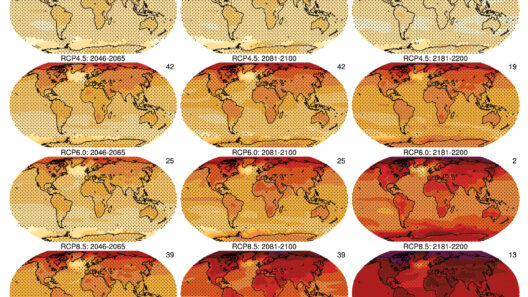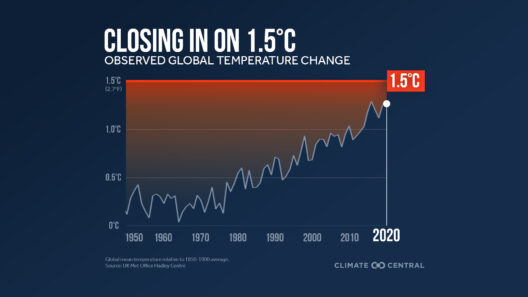The distinction between weather and climate is not just a matter of semantics; it’s a crucial understanding that impacts our daily lives and the very fabric of our society. As we navigate through a rapidly changing planet, grasping the nuances between these two interconnected phenomena becomes increasingly essential.
At its core, weather refers to the short-term atmospheric conditions in a specific place at a given time. Think of weather as the immediate culinary experience at a fine dining restaurant—every dish is subject to the chef’s whims, the diner’s preferences, and the seasonal availability of ingredients. Each day may bring anything from sun-kissed afternoons to torrential downpours, effectively characterizing the flux and unpredictability of our immediate environment.
Conversely, climate embodies the broader, long-term average of these conditions over prolonged periods, usually spanning decades. It serves as the enduring theme in the epic saga of a region’s atmospheric behavior. If weather is akin to a single scene from a grand theatrical production, climate is the entire narrative arc—up and down, twists and turns that unfold with astonishing depth. Grasping this distinction is vital, especially as the specter of climate change looms over our existence.
To understand why this differentiation matters, one must consider the implications of conflating the two. When individuals cite a particularly cold winter as evidence against global warming, they are mistaking the momentary splashes of weather for the broader brushstrokes of climate. This misconception can lead to apathy, inaction, and a lack of critical engagement with pressing environmental issues. In this analogy, a fleeting snowstorm should not overshadow the long-term transformation of glaciers and shifts in biodiversity.
The consequences of failing to recognize this juxtaposition are profound. For instance, agriculture is directly influenced by climate patterns. Farmers rely on a comprehensive understanding of climatic conditions to plan for planting and harvesting. A sudden freeze, while a weather event, doesn’t annul the fact that overall warming trends disrupt the delicate balance of ecosystems—leading to crop failures, decreased yields, and economic instability.
Moreover, the consequences extend beyond the agricultural sector. Weather extremes exacerbate human vulnerabilities, particularly in marginalized communities. Natural disasters, whether floods, hurricanes, or droughts, rise with increasing intensity and frequency as a result of climatic shifts. Here, myriad socio-economic factors intermingle—access to resources, emergency response capabilities, and long-term resilience strategies become tangled in a complex web, rendering vulnerable populations even more susceptible.
The significance of comprehending weather versus climate can also be illustrated through urban planning. Those responsible for designing cities must account for climate patterns that influence infrastructure, water supply, and energy needs. A simplistic approach, where weather patterns are regarded as permanent, would lead to misguided investments in resources and efforts, ultimately costing society both financially and environmentally. As urban areas burgeon under the pressures of climate change, there looms a pressing need for adaptive, resilient designs that can withstand the vicissitudes of both current weather and future climatic trajectories.
Interestingly, human psychology plays a role in how we perceive and respond to these intertwining concepts. Weather is immediate, phenomenally visible in our daily lives. It is easy to be angry at the rain that ruins a picnic but neglect to grasp the broader narrative that shows how this unpredictable behavior fits into a larger climatic puzzle. Behavioral scientists suggest that messaging around climate change ought to incorporate weather-related phenomena, making connections that resonate more deeply with the public. By framing global warming within the schema of what is felt and experienced daily, advocating for sustainable practices may gain greater traction.
Furthermore, the educational systems that mold future generations face an obligation to elucidate these differences clearly. Best practices necessitate pedagogical models that convey complex scientific concepts in an accessible manner. Challenging students to assess climate data trends and evaluate how weather patterns influence local ecosystems lends agency and awareness to the next generation. When youth comprehend the relationship between the circumstantial and the consistent, they are better prepared to advocate for environmental stewardship.
The rise of misinformation and skepticism regarding climate change further complicates this discourse, casting shadows on both weather and climate. Debunking myths that arise from conflating these terms is imperative. In educational settings, it is essential to cultivate critical thinking, enabling individuals to interrogate the validity of claims they encounter publicly. Just as a detective scrutinizes inconsistencies, so too must we probe the narratives we consume and disseminate about our planet’s atmospheric behavior.
Ultimately, the difference between weather and climate transcends language—understanding this distinction lays the groundwork for informed policy-making, community resilience, and personal accountability. The urgency of climate change demands that we engage in more than superficial discussions about fluctuating weather manifestations. Instead, recognizing this nuanced interplay compels us to adopt a holistic approach—a paradigm shift that fosters a sustainable and thriving future.
In a world where immediate weather phenomena dance across our lives like flickering shadows, it is imperative to keep our eyes fixed on the long-term trends that shape our planet’s climate. It’s a call to not only comprehend but to act, ensuring that future generations will inherit a world that honors the delicate balance between these two omnipresent forces. Just as one must reckon with both the wind and the rain, we must also embrace the challenge of safeguarding the climate while responding to the whims of weather.





